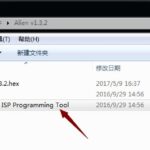The VCDS (Vag-Com Diagnostic System) diagnostic tool relies on various interfaces to communicate with vehicles. A critical component for modern vehicles is the Hex Can interface. Both the HEX-NET and VCDS interface version 2 (V2) utilize this technology, providing significant performance improvements, particularly for vehicles with CAN (Controller Area Network) bus systems. At the core of both interfaces lies the same 32-bit microcontroller enabling this increased speed. However, older interfaces like the HEX+CAN face limitations with newer vehicle models.
The shift to HEX CAN was driven by the increasing complexity of modern vehicles. Older K-Line based systems have a slower communication speed, and while the HEX+CAN and previous generations perform similarly on these vehicles, the limitations become apparent with newer models. Specifically, the HEX+CAN struggles to communicate with all modules in 2016 and later vehicles. The HEX CAN interface in the V2 and HEX-NET addresses this issue, ensuring compatibility with the latest car models. If you primarily work with older vehicles, the need to upgrade to the V2 is less pressing.
Ross-Tech, the developer of VCDS, has indicated that older interfaces, including the HEX+CAN, will eventually lose official support. While a legacy version of VCDS software will likely remain available for continued use with these older interfaces, new features and updates will only be accessible with newer hardware like the V2 and HEX-NET. This allows users with older interfaces to continue diagnostics but encourages upgrading for access to the latest advancements. The timeline for discontinuing support for older interfaces remains undefined but is estimated to be at least a year or more away.
The primary difference between the V2 and HEX-NET lies in the latter’s integrated WiFi capability and onboard storage. The HEX-NET’s WiFi functionality, combined with VCDS-Mobile, allows users to perform diagnostics using a wide range of devices with a web browser and WiFi connection, such as smartphones, tablets, and computers. This provides greater flexibility and convenience compared to the V2’s direct USB connection. The V2, however, provides a robust and reliable wired connection for diagnostics.
